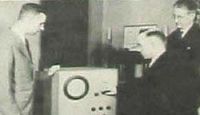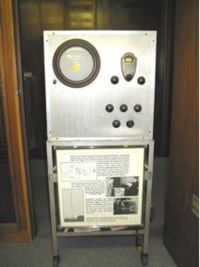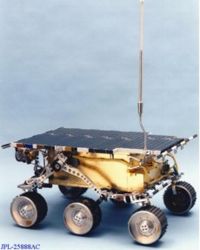| Line 1: | Line 1: | ||
| + | [[Category:ECE]] | ||
| + | [[Category:research area]] | ||
| + | [[Category:ECE CNSIP area]] | ||
| + | |||
=Communication, Networking, Image and Signal Processing at Purdue University= | =Communication, Networking, Image and Signal Processing at Purdue University= | ||
== A Rich History == | == A Rich History == | ||
| Line 32: | Line 36: | ||
== Internal Resources == | == Internal Resources == | ||
* CNSIP lounge wiki calendar | * CNSIP lounge wiki calendar | ||
| − | |||
| − | |||
| − | |||
| − | |||
| − | |||
| − | |||
| − | |||
Revision as of 11:49, 31 December 2008
Contents
Communication, Networking, Image and Signal Processing at Purdue University
A Rich History
Purdue University has a rich and long history in communications and signal processing. For example, did you know the the following facts?
- Reginald Fessenden, former head of Purdue's Electrical Engineering Department, became the first person to broadcast speech and music by radio on December 24, 1906;
- The first commercial broadcast station in Indiana was constructed by Purdue Professor Achatz and D. L. Curtner in 1920;
- In 1929, Roscoe George started working on an all-electronic television. The TV was completed in 1932, and was one of the first electronic TV receivers ever built. The actual TV is currently on display in Prof. Delp's VIPER lab. Click here for more details.
- Purdue's first television station, W9XG, began broadcasting on December 31, 1931. Click here for more details.
- Purdue awarded the first PhD in digital image processing in 1959.
- The first MARS rover used image compression technology developed at Purdue by Prof. Delp.
- Much off the early work in spred spectrum communication was done at Purdue by George Cooper and his students.
People
Laboratories
Research Projects
- GE Research Program
- Hewlett-Packard Research Program
- Rosetta Phone project
- Xerox Research Program
Internal Resources
- CNSIP lounge wiki calendar





